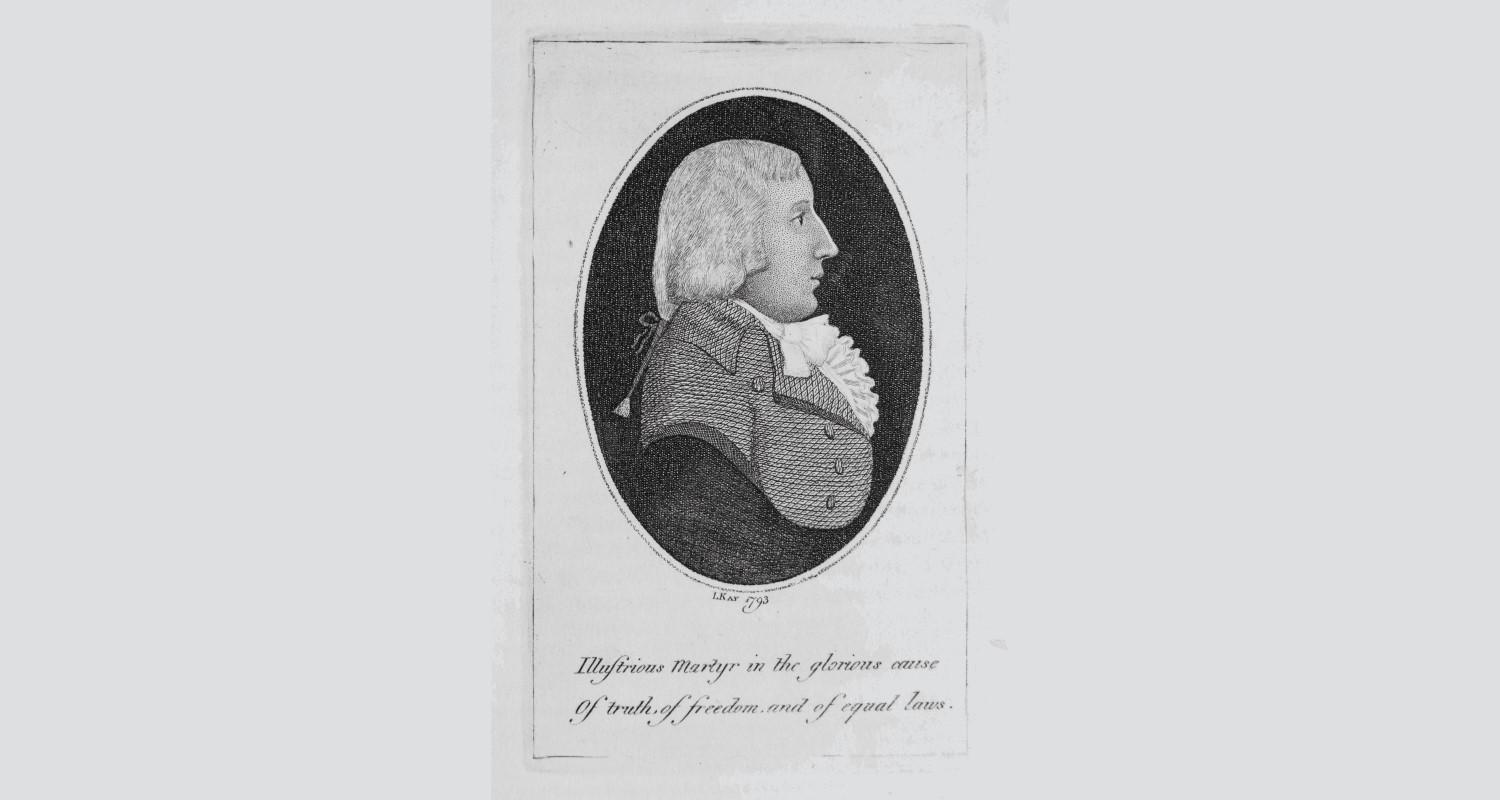The obelisk on Edinburgh’s Calton Hill is not a trophy looted from Ancient Egypt but the Martyrs’ Monument erected in 1844 to honour five men, three Scots and two English, transported to Botany Bay in 1794. Their only ‘crime’ was to campaign for the right to vote.
The 1789 French Revolution had been welcomed in Britain with enthusiasm. It marked the end of the ‘Ancien Regime’. However, the execution of Louis XVI in January 1793 and the subsequent ‘Reign of Terror’ changed the mood of the British ruling establishment to one of fear and loathing. There was a crackdown on anyone suspected of spreading the ideas of revolutionary France. An army of spies and informers was deployed by the government.
Thomas Muir, a talented young Lanarkshire man, was one of many arrested and charged with sedition. He was put on trial at the High Court in Edinburgh in August 1793. Muir elected to defend himself before a hostile jury, schooled witnesses and with the formidable Lord Braxfield on the bench. Not surprisingly he was unanimously found guilty and sentenced to fourteen years’ transportation to Botany Bay. He never saw Scotland again.
The story of Thomas Muir is both tragic and inspirational.
Eric Melvin is our speaker. Eric graduated with First Class Honours in History and Political Thought from Edinburgh University in 1967. He qualified as a secondary teacher of History and Modern Studies at the then Moray House College of Education gaining a Dip. Ed. in the process and the Staff Prize. Eric later gained an M.Ed. from the University of Edinburgh. He retired from teaching in 2005, working latterly for the City of Edinburgh Council as Headteacher at Currie Community High School. Eric has had several books published on various aspects of Edinburgh’s rich history including books for young readers.
Edinburgh is 900 Years Old!
In 1124 King David I introduced a new system of local government into Scotland by creating royal burghs as part of his efforts to reform the nation’s economic and political structures.
Edinburgh was one of his first royal burghs, along with Berwick, Dunfermline, Roxburgh and Stirling.
While there is no surviving founding Edinburgh charter, an 1127 Dunfermline Abbey royal charter refers to ‘my burgh of Edinburgh’. In 1128, Canongate Burgh was created for Holyrood Abbey.
After the Reformation, Edinburgh spent considerable effort acquiring the former abbey’s lands over the following 200 years. It acquired Canongate then created a new burgh for South Leith in 1636. The burghs of Broughton, Calton and Portsburgh were also acquired and run by Edinburgh. This complex system of governance was abolished in 1856 when all burghs under the management of Edinburgh were merged into a single burgh.
In 1833, Portobello and Leith were made independent parliamentary burghs under the Burgh Reform Act. They ran their own affairs until amalgamated into an expanded Edinburgh in 1896 and 1920, respectively. 1975 saw the last expansion of the city’s boundaries, including Queensferry, which had been made a royal burgh in 1636.
Edinburgh has selected 2024 to mark the start of the 900th anniversary of our city, and to tell the story of Edinburgh’s journey through the centuries from the 12th century City of David right up to the 21st century, the City of Diversity. Our talks at the City Art Centre will celebrate the 10 themes and will span a period of summer 2024 until August 2025.
Thomas Muir and the Martyrs’ Monument on Calton Hill
